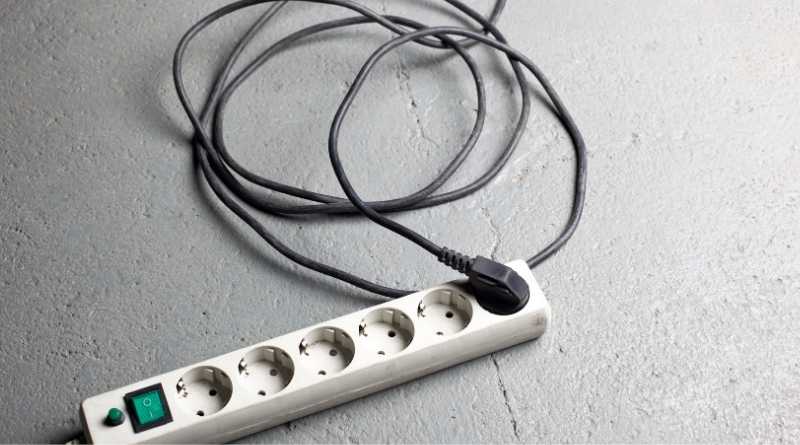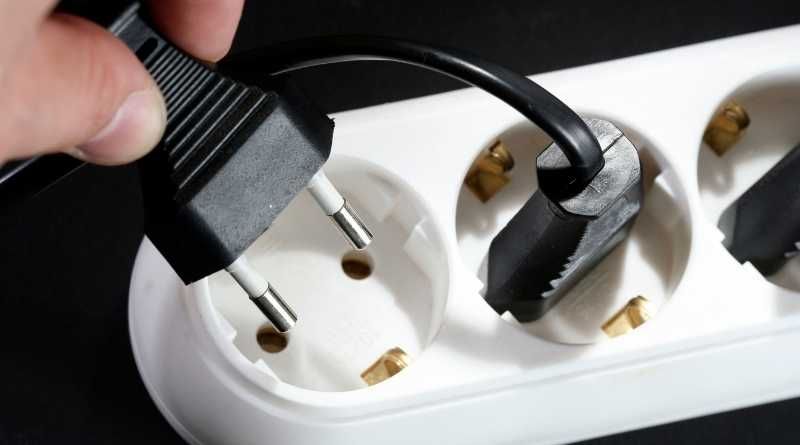Power surges are very common in the home. A surge protector will prevent your appliances from getting damaged by absorbing the extra power that comes through the power lines. The surge protector will absorb the extra power coming through the power lines and pass it to the wire you have connected and the wire will safely absorb the extra power.
But what if your surge protector is connected to a device that is on the outdoors? What if it rains? Are they waterproof?
Table of Contents
Are Surge Protectors Waterproof?
All surge protectors are not waterproof, but there are those that are and they are more costly. Get one with an IP rating of at least 5, which is the standard for waterproof protectors and means that the device can withstand water projected from a hose.
Surge protectors are one of the most common pieces of office equipment in the modern workplace, and are a vital part of the technology we all use.
You might have thought that all surge protectors are waterproof, but this is not always the truth.
While the many of the surge protectors on the market meets the IP code (Ingress Protection Rating) standard and are waterproof, most models aren’t especially the cheap ones.
If you are looking for a waterproof surge protector then you should know about the IP Rating System. Surge protectors are rated by the Ingress Protection rating system, and the IP rating provides information on both the level of dust protection and water protection.
The rating scale is denoted by the letters IP followed by two numbers. Both numbers are important, but the first number refers to dust protection and the second to water protection.
Since we are talking about water protection we will focus on the later.

IP Rating System
It’s easy to get lost in the technical details of different surge protectors, but it’s also important to know what they mean in practical terms. Most use the term “IP rating” to define the surge protector’s level of protection from water and dust. IP stands for Ingress Protection.
The rating system was created by the International Electrotechnical Commission (IEC), an international standards organization.
Liquid ingress protection (Second Number)
This is a breakdown of the IP Standard as it relates to being water-resistant and waterproof:
| Level | Effective Against |
|---|---|
| IPX0 | This means that it isn’t water-resistance at all. Think about what happens to paper when it gets wet. You end up with a mess and your novella gets ruined. |
| IPX1 | This guarantees a device’s protection from water droppings that are falling from above vertically. While it is possible for this scenario to actually happen, it is not very likely. |
| IPX2 | It will protect your thingy from water drops when tilted up to and including 15 degrees. If you have your device at 16 degrees, it is not protected. |
| IPX3 | One step better, you can now spray from up to 60 degrees from the top of the device. So, yeah, that’s cool. |
| IPX4 | Splashing water from any direction onto your surge protector is okay and you don’t have to worry |
| IPX5 | It will keep your stuff safe from any direction of water jets. |
| IPX6 | Able to withstand powerful jets of water. This means if you modified your super soaker with an air compressor and an aftermarket tip, you will still be protected. In reality, IPX6 is waterproof. |
| IPX7 | If you accidentally drop your device in water for up to three feet, your device would still be working. |
| IPX8 | This is designed to protect your device in water with a depth of more than three feet. This is for the bottom of a pool, a lake, and even a deep public hot tub. |
You should realise that there is no intrinsic value to each level; it is just a way of comparing products and giving you an idea of how well the device will resist things like dust and dirt.
A surge protector with an IP code of four will be more effective than one with an IP code of two, but both should have excellent protection levels. While a device with a higher IP code might be more expensive, you should bear in mind that it will protect your devices better than one with a lower number.
Can Ordinary Surge Protectors Be Used Outside?
Surge protectors are very handy devices that you can easily plug into an electrical outlet to protect your home theater system, desktop computer, and other sensitive electronic equipment from harm in case of a power surge.
However, it is very important to choose a surge protector with the right specifications, since not all surge protectors are created equal.
Many homeowners may use a surge protector for home theater system, but they fail to realize that they cannot use that same surge protector outside.
For many of us who live in regions where heavy rain and snowfall occur often, in-ground pool, fishing, camping, and other outdoor activities are part of our lives. You should use a waterproof surge protector when you plan to use it outside especially in damp areas or places where rain occurs often. Non-waterproof surge protectors can cause accidents if you are not careful in protecting them from water or any liquids.
What Happens If A Surge Protector Gets Wet?
If a surge protector has been in contact with water, it may still be functional even though it has been doused completely or even flooded. However, there is a limit to the amount of liquid that can be allowed into the device before it must be replaced.
This is because when water enters the surge protector, it creates an electrical resistance that could potentially burn-out the device.
This is why any device with a rating of two or lower is recommended to be replaced immediately after being exposed to liquid. However, devices rated at an IP code of five and above can be submerged in water and, as long as it is allowed to dry naturally, will probably still work fine.
If your surge protector does get wet, you should then open the case and allow the surge protector to dry naturally for at least 24 hours before attempting to plug it in again.
Can A Wet Surge Protector Start A Fire?
Since water and electricity can’t exist in the same place, any water in the outlet will cause a risk of electrocution and fire.
When water is present in electrical wirings, short circuits can happen causing wires to heat up and can even start electrical fires.
If you have a wet power surge,
- The first thing you want to do is shut off the power source and be sure no one is touching the appliance or electrical device that got wet.
- The second thing you want to do is unplug the device or computer and make sure it is not touching anything else that can get wet (like walls, carpets, furniture, etc.)
Reliable protection of your home and office from fire and electrocution is one of the most important things that you can provide for your family and workers.
Conclusion
Surge protectors are not waterproof by nature. Even if you are looking for models with waterproofing, you’ll find that many that are not.
The reason that some models are not waterproof is that they only have an IP rating of 2 or 3. It is important to understand the difference between models with IP ratings of 2 or 3 from models with IP ratings of 5.
To get a surge protector that is waterproof, you need to get one that has an IP rating of at least 5. This is the standard for waterproof protectors and means that the device will withstand Water projected from a nozzle.


